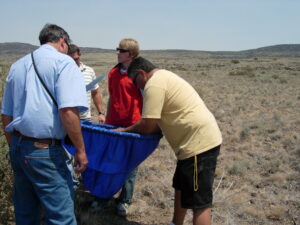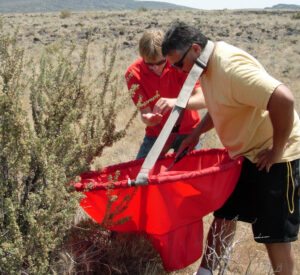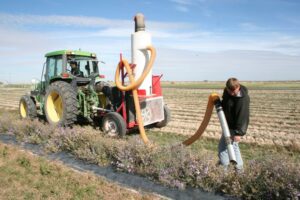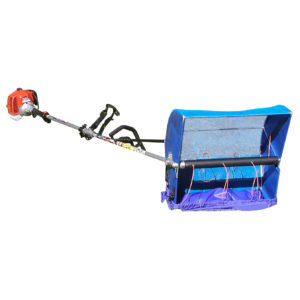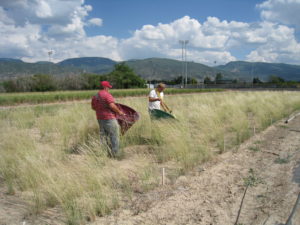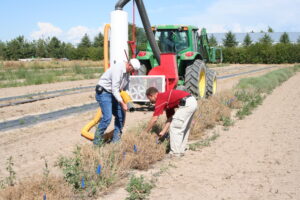Description
Seed from some native shrubs, grasses, and forbs must be harvested manually from plants in wildland stands and in some cases from agricultural seed fields. Seeds of many species are collected by hand stripping or clipping the inflorescences or plucking individual fruits or seed heads. Badminton rackets (grasses/forbs), tennis rackets (shrubs), or short flat sticks can be used to dislodge fruits or seeds of some species. Containers for hand harvested seed include bags, baskets, cans, tubs, and hoppers. Lightweight hoops made from strong ripcord cloth and plastic tubing plus a padded shoulder strap are versatile and popular containers for extended use. They are suitable for small and large patches and with an experienced operator can be effective. Careful hand collection can be conducted in wetlands and other environmentally sensitive areas.
Images
References / Additional Information
Archibald, C.; Dremann, C.C. 2004. Low-tech devices for collecting, processing, and planting seeds: Cleaning grass seeds. Native Plants Journal 5(1): 51-52.
Jensen, S. 2004. Racquets, hoppers, and felt boards: Low-tech devices for processing seeds. Native Plants Journal. Native Plants Journal 5(1): 50-51.
Jorgensen, K.R.; Stevens, R. 2004. Seed collection, cleaning, and storage, Chapter. 24. In: Monsen, S.B.; Stevens, R.; Shaw, N., comps. Restoring western ranges and wildlands, vol. 3. Gen. Tech. Rep. RMRS-GTR-136-vol-3. Fort Collins, CO: U.S. Department of Agriculture, Forest Service, Rocky Mountain Research Station: 699-716.
Pedrini, S.; Gibson-Roy, P. Trivedi, C.; and others. 2020. Collection and production of native seeds for ecological restoration. Restoration Ecology. 28(S3): S228-S238.


